Patrimonio costruito come risorsa culturale: esperienze didattiche di restauro architettonico
Abstract
La salvaguardia e il mantenimento dell’identità culturale di un territorio passa attraverso il riconoscimento delle peculiarità architettoniche paesaggistiche e antropologiche di questo stesso.
È quello che è stato chiamato riconoscimento del genius loci. Il pericolo è quello della "progressiva" dimenticanza di questi elementi fondamentali, perduti per far posto ad "elementi tipo”, appartenenti ad una realtà in un certo qual modo "virtuale", e che manca di materia, di singolarità di specificità. Lo studio e l’individuazione di “monumenti, siti in centri storici abbandonati o in via di abbandono, ruderi architettonici privi quasi del tutto di “significato”, la loro conservazione con nuovi usi, può essere il modo per raggiungere l’obiettivo, solo se la procedura di conoscenza, analisi, intervento di restauro, progetto di riuso, in sintesi progetto di restauro e architettura soddisfa, dopo averli riconosciuti i reali bisogni dei fruitori di questi cosiddetti "nuovi monumenti". Il pericolo reale, è quello di creare da paradigmi antichi riconosciuti in linguaggi semantici che via via si vanno perdendo, tante “nuove “unità architettoniche, urbane non integrate con il paesaggio, che non sono “realmente utili” e che mancano di un collegamento ad un piano generale complessivo. Ritrovare antichi mulini situati sui sistemi interni montani, opifici industriali esistenti lungo le linee costiere calabresi, antichi forti posti come roccaforti: il restauro di queste emergenze può avere un esito duraturo nel tempo se si realizza insieme ad un piano più generale costituito dalla progettazione e realizzazione di vie e percorsi ecosostenibili di collegamento nel territorio.
Built Heritage as a Cultural Resource: Didactic Experiences of Architectural Restoration
The preservation and maintenance of the cultural identity of a territory passes through the recognition of the architectural landscape and anthropological peculiarities of the area, so called “recognition of the genius loci”. The risk is of the gradual loss of memory of these fundamental elements, which are being mainly replaced by standard elements, belonging to a substance of “virtual” poor, both in singularity and specificity.
The study and identification of "monuments, settled in historical centres which are abandoned, or, in the process of abandonment, architectural ruins almost completely devoid of" meaning ".
Their preservation with new functions can be the way to reach the goal, only if the knowledge procedure of restoration, restoration work analysis, and reuse project- in other words – the restoration and the architecture project satisfy the real needs of the users of these so-called new monuments. The real risk is that of creating ancient paradigms, recognised in semantic languages, that are gradually being lost, numerous "new" urban architectural units which are not integrated with the landscape, which are not "really useful" and which do not provide a connection to an overall masterplan. Rediscovering ancient mills located on the internal mountain areas, industrial factories existing along the Calabrian coastlines, ancient powerfully-built places such as fortresses: the restoration of these buildings can have a lasting outcome over time when completed together with a more general plan including the realisation of eco-sustainable routes and connection routes within the surrounding territory.
Parole chiave
Full Text
PDFDOI: https://doi.org/10.14633/AHR158
Refback
- Non ci sono refbacks, per ora.
Copyright (c) 2019 Alessandra Maniaci

This work is licensed under a Creative Commons Attribution-NonCommercial 4.0 International License.
........................................................................................................................................................................................................................................................................................................................................................
ArcHistoR è una rivista open access e peer reviewed (double blind), di Storia dell’architettura e Restauro, pubblicata dall’Università Mediterranea di Reggio Calabria. La rivista ha cadenza semestrale. È una rivista di Classe A (ANVUR) per l’Area 08 - Ingegneria civile ed Architettura, settori C1, D1, E1, E2, F1.
Comitato scientifico internazionale
Maria Dolores Antigüedad del Castillo-Olivares (Universidad Nacional de Educación a Distancia de España), Monica Butzek (Kunsthistorisches Institut in Florenz), Jean-François Cabestan (Université Paris 1 - Panthéon Sorbonne), Alicia Cámara Muñoz (Universidad Nacional de Educación a Distancia de España), David Friedman (Massachussets Institute of Technology), Alexandre Gady (Université Paris-IV-Sorbonne), Jörg Garms (Universität Wien), Miles Glenndinning (Scottish Centre for Conservation Studies, University of Edinburgh), Mark Wilson Jones (University of Bath), Loughlin Kealy (University College Dublin), Paulo Lourenço (Department of Civil Engineering, University of Minho), David Marshall (University of Melbourne), Werner Oechslin (ETH, Zurich, Stiftung Bibliothek Werner Oechslin, Einsiedeln), José Luis Sancho (Dirección de Conservación de Bienes Histórico-Artísticos, Palacio Real, Madrid), Dmitrij O. Švidkovskij (Moscow Architectural Institute, MARCHI)
Comitato direttivo
Tommaso Manfredi (direttore responsabile), Giuseppina Scamardì (direttore editoriale), Antonello Alici, Salvatore Di Liello, Fabrizio Di Marco, Paolo Faccio, Mariacristina Giambruno, Bruno Mussari, Annunziata Maria Oteri, Francesca Passalacqua, Edoardo Piccoli, Renata Prescia, Nino Sulfaro, Fabio Todesco, Guglielmo Villa
........................................................................................................................................................................................................................................................................................................................................................
Laboratorio CROSS. Storia dell'architettura e Restauro

ISSN 2384-8898

This work is licensed under a Creative Commons Attribution-NonCommercial 2.0 Generic License.

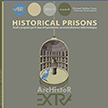
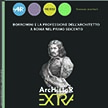
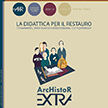
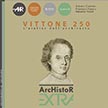
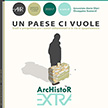
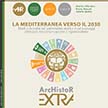
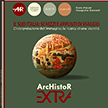
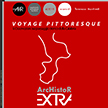
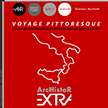
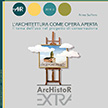
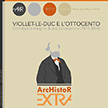

_2.jpg)



